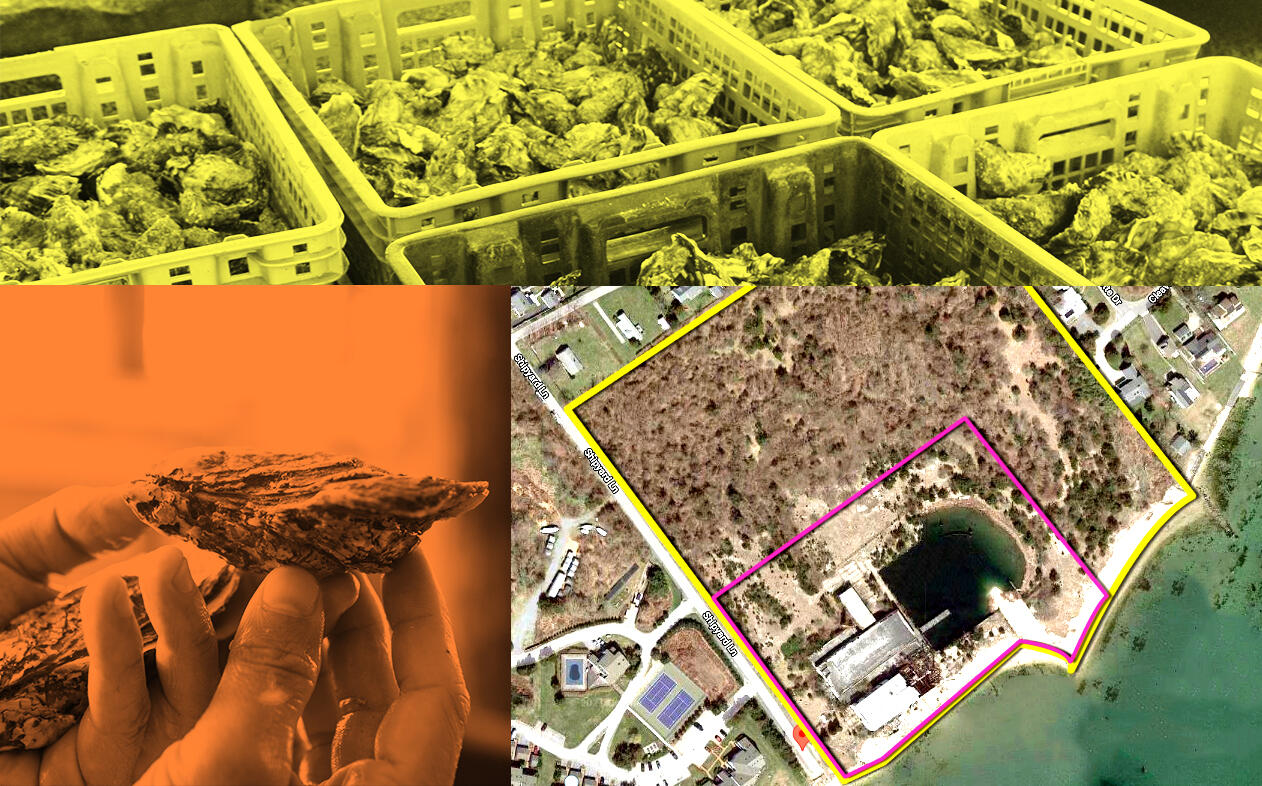Trending
Purchase of former oyster farm puts town in a pickle
Development would replace decrepit factory, but locals fear impact

Scott Russell saw this one coming.
Some years ago, a developer had proposed a North Fork waterfront project far too intense for its would-be neighbors’ liking. But it complied with the East Marion site’s zoning, leaving opponents little legal ground to stop it.
The site would make any developer salivate: 18 acres on Gardiners Bay and minutes from the trendy summer community of Greenport. Aside from unhappy locals, the site’s only downside was a hulking, abandoned building where an oyster factory once bustled.
The developer’s plan for 114 hotel rooms, two dozen rental cottages, two restaurants, an amphitheater and a marina had inexplicably stalled, but Russell, the Southold Town supervisor, knew it was a matter of time before someone applied for permits to build such a resort — permits he would have to grant, no matter how many pitchforks appeared outside his office.
So Russell told his planning department to get started on a rezoning, which was sidetracked when the pandemic hit. Sure enough, Hamptons-based Paramount Homes in October scooped up the Shipyard Lane site, known locally as the Oki-Do property, for $6 million, and revealed plans to construct 80 condominium units, including some affordable to working-class people.
“My client feels that that’s very important,” Paramount’s lawyer, Steven Losquadro, told the Southold Town Board about the affordable housing, according to the Suffolk Times. “My client could make that happen, make it happen in a very substantial way and we think that could be an important component of the project and would bring something to the town that I think residents would want, residents need.”
Losquadro might want to think again.
Although the town crafted a comprehensive plan that calls for more affordable housing in Southold, no one has shown up to testify in favor whenever low-income homes are proposed. At the same time, “I certainly get a lot of calls from people yelling at us for considering it,” Russell commented at a community meeting about Shipyard Lane.
The North Fork, a 30-mile peninsula from Riverhead to Orient Point, is almost entirely single-family homes, farms and vineyards. A good portion of its dwellings are second homes. Apartment buildings for low-income people are about as welcome as a flat tire.
Read more
In an online survey by the East Marion Community Association about the Oki-Do site, more than 80 percent of respondents said they do not want affordable housing there. Sentiment against it appears strongest on Shipyard Lane itself.
What those residents might fear even more is traffic, the kind triggered by restaurants and short-term rentals that would be the most lucrative use at the former oyster factory.
Traffic, like everything else, is relative. Nothing built at Oki-Do is going to turn Shipyard Lane into the Cross-Bronx Expressway, and a project could perhaps mean a vehicle passing every two or three minutes. But when you live on a quiet, dead-end street where squirrels vastly outnumber people, that seems like a lot.
Shipyard Lane residents know well what Paramount’s project would mean, because directly opposite the site is Cleaves Point, a 62-unit, early-’80s condominium complex where two-bedroom units sell for north of $800,000.
“The traffic back and forth to the condos during the summer is very, very heavy,” one woman told Russell at the meeting, noting that she has lived on the lane long enough to remember the oyster factory in operation. “By putting the same sort of thing across the street, you’re going to double the traffic, maybe triple the traffic. That’s a big impact on our quality of life.”
She and others appear to favor the 2-acre, single-family zoning, which could limit development to nine homes priced at $3 million or more.
The town supervisor had tried to pre-empt that argument by pointing out that current zoning allows for development that would draw far more traffic than four dozen condos. He asked residents to support the town’s proposal to instead allow 44 hotel rooms averaging 600 square feet, plus a small restaurant and some open space. A public hearing could be held next month.
According to Russell, a rezoning that severely limits profit potential would result in the site remaining an eyesore and its glorious waterfront inaccessible, contrary to a goal of the town’s comprehensive plan. Moreover, he said, it would be indefensible in court.
“You can’t just take property,” the supervisor said. “You also want to make sure that you don’t discourage some investment.”
The civic group’s survey also solicited opinions about the town’s proposal. Among 195 responses, 63 percent did not like it.
“A lot of times people look at a current proposal and say, ‘We don’t like it,’” said Russell. “But they don’t look at the current zoning and say, ‘What can go there?’ That’s the problem.”




